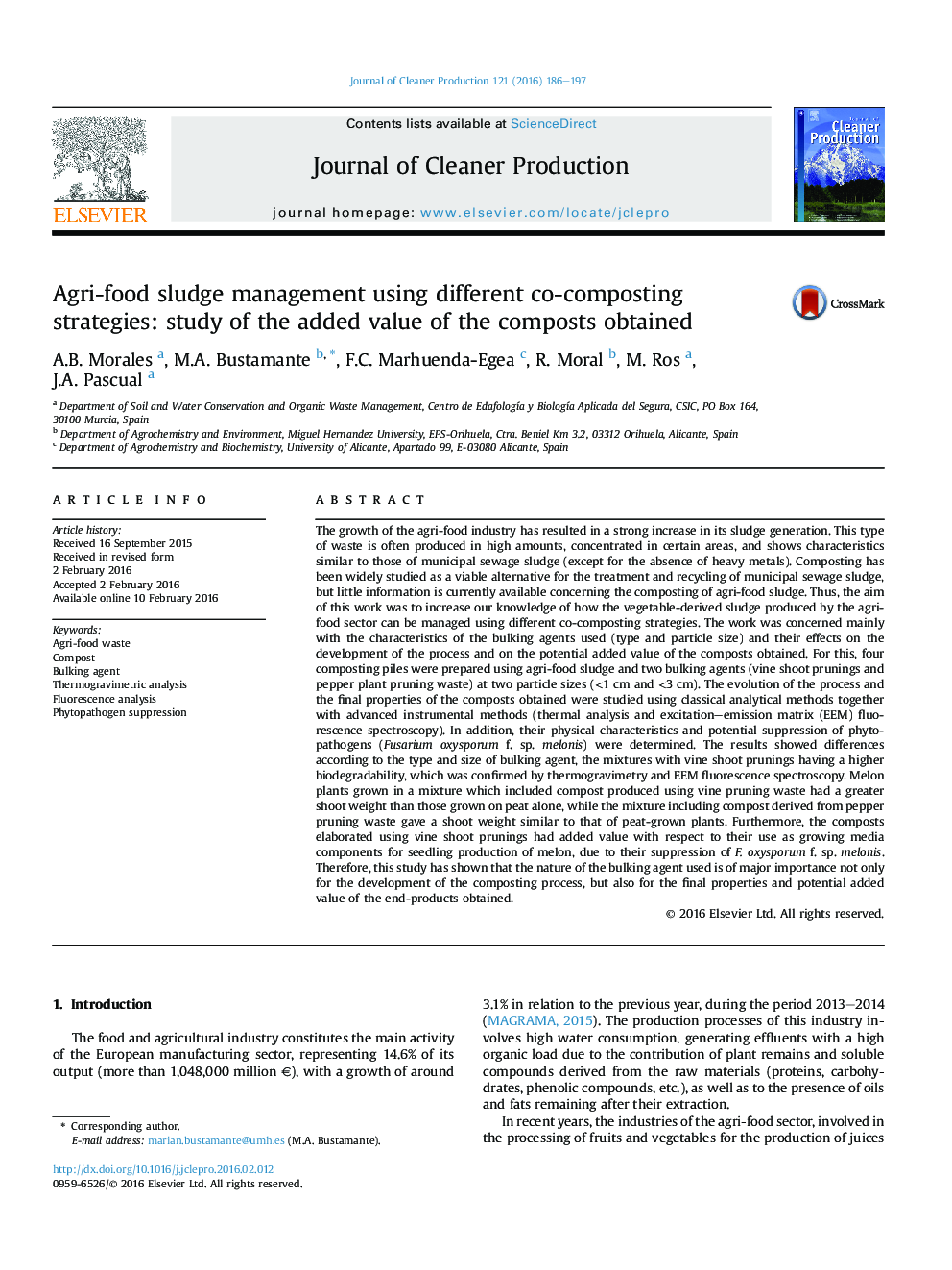| کد مقاله | کد نشریه | سال انتشار | مقاله انگلیسی | نسخه تمام متن |
|---|---|---|---|---|
| 1744167 | 1522128 | 2016 | 12 صفحه PDF | دانلود رایگان |
عنوان انگلیسی مقاله ISI
Agri-food sludge management using different co-composting strategies: study of the added value of the composts obtained
ترجمه فارسی عنوان
مدیریت لجن غذایی کشاورزی با استفاده از استراتژی های همکاری کمپوست مختلف: مطالعه ارزش افزوده کمپوست به دست آمده
دانلود مقاله + سفارش ترجمه
دانلود مقاله ISI انگلیسی
رایگان برای ایرانیان
کلمات کلیدی
زباله های کشاورزی کمپوست، عامل انباشته، تجزیه و تحلیل ترموگرافی، تجزیه و تحلیل فلورسانس، سرکوب فیتوپاتوژن،
موضوعات مرتبط
مهندسی و علوم پایه
مهندسی انرژی
انرژی های تجدید پذیر، توسعه پایدار و محیط زیست
چکیده انگلیسی
The growth of the agri-food industry has resulted in a strong increase in its sludge generation. This type of waste is often produced in high amounts, concentrated in certain areas, and shows characteristics similar to those of municipal sewage sludge (except for the absence of heavy metals). Composting has been widely studied as a viable alternative for the treatment and recycling of municipal sewage sludge, but little information is currently available concerning the composting of agri-food sludge. Thus, the aim of this work was to increase our knowledge of how the vegetable-derived sludge produced by the agri-food sector can be managed using different co-composting strategies. The work was concerned mainly with the characteristics of the bulking agents used (type and particle size) and their effects on the development of the process and on the potential added value of the composts obtained. For this, four composting piles were prepared using agri-food sludge and two bulking agents (vine shoot prunings and pepper plant pruning waste) at two particle sizes (<1 cm and <3 cm). The evolution of the process and the final properties of the composts obtained were studied using classical analytical methods together with advanced instrumental methods (thermal analysis and excitation-emission matrix (EEM) fluorescence spectroscopy). In addition, their physical characteristics and potential suppression of phytopathogens (Fusarium oxysporum f. sp. melonis) were determined. The results showed differences according to the type and size of bulking agent, the mixtures with vine shoot prunings having a higher biodegradability, which was confirmed by thermogravimetry and EEM fluorescence spectroscopy. Melon plants grown in a mixture which included compost produced using vine pruning waste had a greater shoot weight than those grown on peat alone, while the mixture including compost derived from pepper pruning waste gave a shoot weight similar to that of peat-grown plants. Furthermore, the composts elaborated using vine shoot prunings had added value with respect to their use as growing media components for seedling production of melon, due to their suppression of F. oxysporum f. sp. melonis. Therefore, this study has shown that the nature of the bulking agent used is of major importance not only for the development of the composting process, but also for the final properties and potential added value of the end-products obtained.
ناشر
Database: Elsevier - ScienceDirect (ساینس دایرکت)
Journal: Journal of Cleaner Production - Volume 121, 10 May 2016, Pages 186-197
Journal: Journal of Cleaner Production - Volume 121, 10 May 2016, Pages 186-197
نویسندگان
A.B. Morales, M.A. Bustamante, F.C. Marhuenda-Egea, R. Moral, M. Ros, J.A. Pascual,
